Elements of Design: Understanding the 7 Elements of Design
A good design communicates ideas, evokes emotions, and captures the viewer's attention. For you to make such good designs, there are fundamental elements that the designer must be conversant with.
Graphic designs have various elements that designers must understand well to create visually pleasing digital graphics. Color, shape, and form are popular design elements you are familiar with, but other elements are just as important.
This article explores the seven digital design elements and the building blocks a designer uses to create an excellent graphic design.
Let’s get started.
What Are the Elements of Design?
Elements of design are fundamental building blocks of visual design, the little details that determine the quality and appeal of the design. These elements need to be in the right place and at the right angles to ensure your design works are visually appealing.
As a designer, you must consider seven important elements in every design project to ensure viewers find the piece of art appealing. These elements include form, shape, line, texture, color, value, and space.
The elements of design go side by side with the principles of design. Design principles are the rules that guide the use of design elements to help designers create masterpieces. These design principles guide graphic designers to deliver quality and intended results.

Graphic designers rely on these design elements to produce images that resonate with the viewers, drawing their attention to the particular message the image is trying to communicate.
These design elements are crucial in the web design process. They ensure that the website's user interface makes it easy for its customers to understand and use.
Web design statistics show that 40% of consumers value images and 39% color on a company’s site in terms of visual elements.
The Elements of Design
1. Form
Form is the way a shape or physical structure takes up space. Three-dimensional forms come in two varieties which are natural and geometric. The dimensions of a form, whether natural or digital, are width, height, and depth.
Rather than using actual three-dimensional shapes to generate form, graphic designers create the illusion of form on a flat surface.
Designers use negative space, light, shadow, and the surrounding items to highlight their subjects. It is important to note that negative and positive space plays a role in composition in design.
In digital design, you should see the form as the object you are designing for. For example, if what you are creating is a camera, the camera is your form. Shapes make up all objects, and all elements of design are shapes in a way.
A designer can draw geometric forms with a ruler, compass, or electronic device. These tools produce precise shapes that resemble architectural works. You can make these geometric forms by hand or with CAD software.
The opposite of geometric forms, organic forms are created by hand or can be found naturally. They resemble geometric forms in complexity and are frequently smooth or natural.

2. Shape
In its purest form, a shape is a two-dimensional area with a border around it. A graphic designer can employ other elements such as line, color, value, and shadow to give a shape a more three-dimensional appearance.
Shapes come in three varieties: abstract shapes that loosely depict natural objects, geometric shapes that are precisely angular and mathematically consistent, and organic shapes that occur naturally.
In composition, you can create visual forms using bullet points, pictures, or a body of text. Negative space can form a shape. When used in graphic design, shapes convey a sense of awareness, purposefulness, and reliability.
For example, shapes like triangles direct attention to unique features or specific pieces of content when used in graphic design. Shapes complement the design cohesively and facilitate a deeper comprehension of the desired message.

3. Line
A line is the shortest path in space between two connected points. In design, lines can be vertical, horizontal, or diagonal, and you don't always have straight lines. These lines draw the viewer's attention to a particular area of your composition.
Designers pay attention to their line when designing because they know it can create visual interest.
In addition to using straight or simple lines, you may use other lines, such as curved or patterned lines, to create texture. One of the most fundamental elements of design, the line, is frequently the beginning point of every art form.
Lines belong to different classes and have subtle differences in their structure. They include horizontal, vertical, diagonal, straight line or even curved lines. There are also narrow, implied lines, dotted lines, unbroken lines, invisible lines, or thin lines.
Points come together to form lines., while a combination of different lines creates shapes. A line can carry other elements like texture, color, and movement. There are two main kinds of lines: implied lines and actual lines.
When points or objects align in a certain way that the brain notices a pattern, you create implied lines.
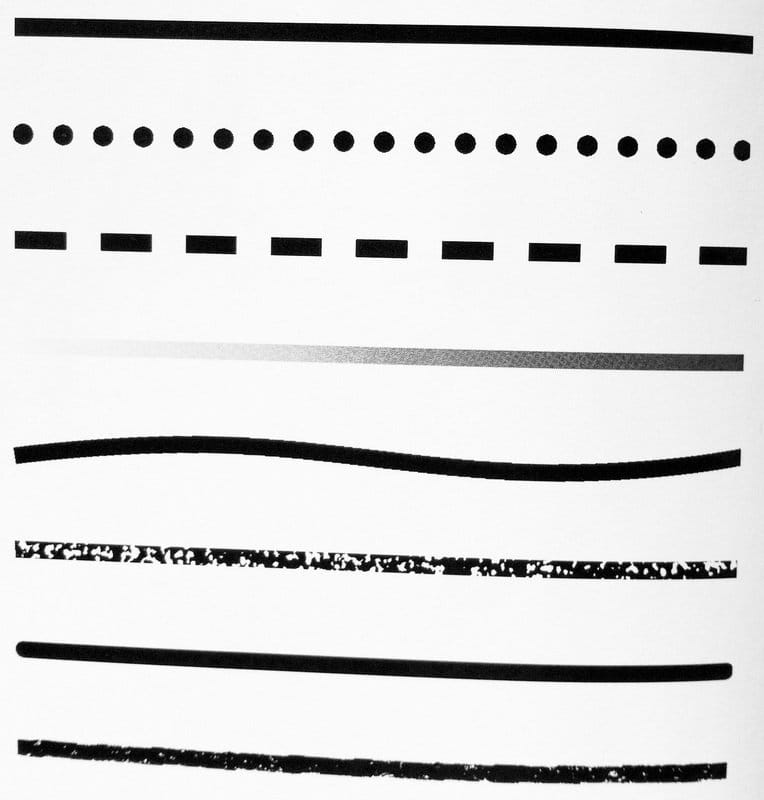
4. Texture
Texture refers to how a surface feels or is perceived to feel when touched. It is one of the primary elements of design used to convey an object's appearance or feel.
There are two types of texture: visual and tactile.
Visual texture describes the imagined feel of the drawn picture or design and can enhance both the visual appeal and sensory experience. You can enhance the visual textures by adding multiple textures to make the design richer.
A tactile texture might be ribbed, smooth, or rough to the physical sense of touch. Building walls are an excellent illustration of tactile texture.’
You can feel the wall's well-defined edges and rough texture when you touch it. One may classify an image of the same wall as a visual texture. This image is visible to you, but you cannot feel it.
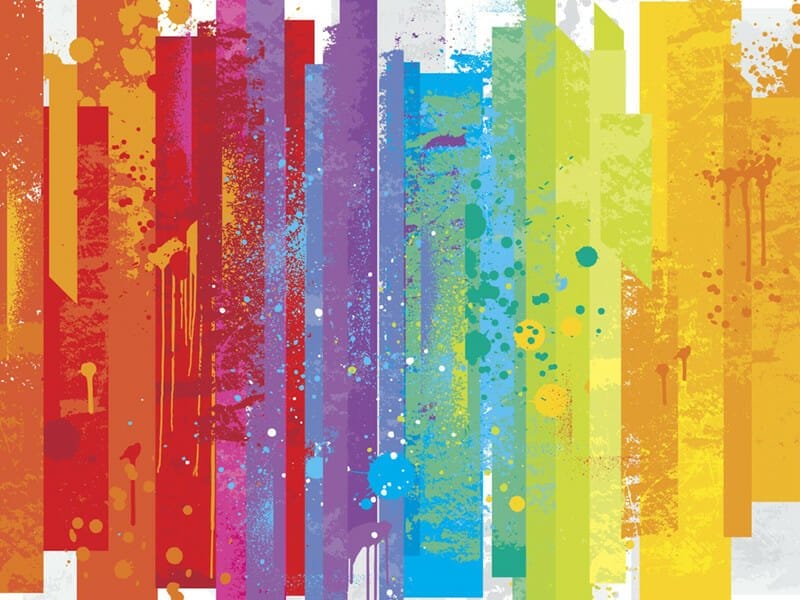
5. Color
Color is one of the most complex elements of design to master and possibly the hardest to comprehend. By using color systems, you can give your graphic design the right feel.
This design element is fundamental to design balance, and it plays a crucial role in creating stunning graphics. The strategic use of color influences visual balance in graphic design.
Color is the effect humans see when light waves strike an item and reflect off the optic nerve in their eyes. A tool graphic designers and artists use to illustrate and explain subjects.
Designers use pure colors to convey a specific point of view, depth, light, and emotion. To construct color schemes, designers use the color wheel and the principles of color theory.
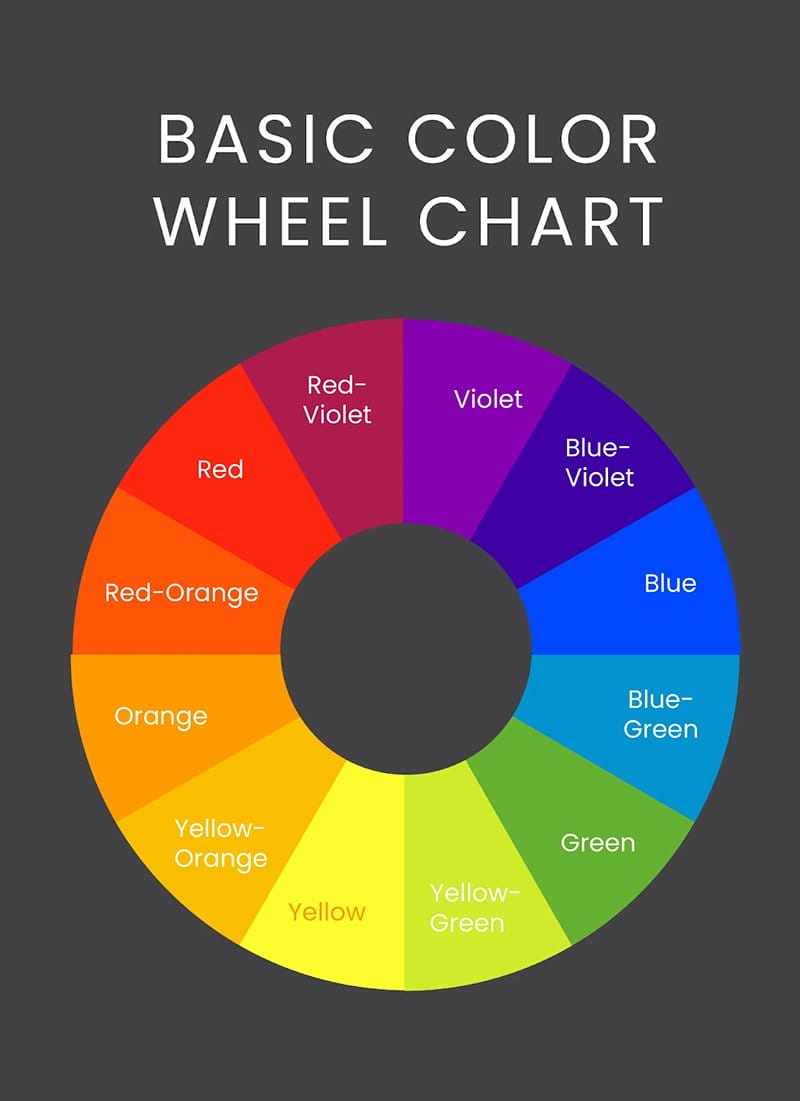
Color has various characteristics, such as hue, saturation, and lightness, much like other elements.
Hue is a term used to describe a wavelength of light in the color spectrum combined with red, green, and blue, the primary colors. A given color might be saturated brightly or dimly or light or dark on the spectrum.
Although color is universal, its meaning varies throughout cultures. For instance, a white background can mean death in certain cultures and purity in others.
Asymmetrical balance helps add depth to these designs through the unique arrangement of multiple colors.
6. Value
Value in design describes how bright or dark a color is when it appears in a composition or design. A gradient, which shows a range of hue variations sorted from brightest to darkest, is a common way to illustrate color values.
Artists can use different color values to show increased mass and volume in their work. A change in an object's brightness or darkness causes a change in its value.
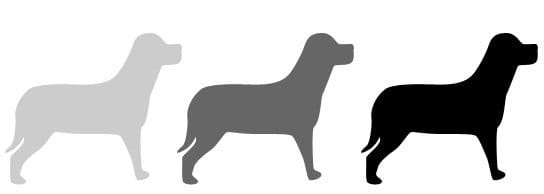
7. Space
The two basic categories of space are negative space and positive space. Using space effectively can change others' perceptions of your design.
The area in a picture between or surrounding the focal point is known as whitespace or negative space. On the other hand, the area in your design that your subject occupies is positive space. Your design's spacing is crucial since an overly packed layout can overwhelm the viewer's eye.
You need to understand the significance of using negative space. Your design can show a feeling of visual harmony, clarity, and visual hierarchy within compositions by purposefully using negative space.
Negative space makes the elements stand out and makes them easier for the spectator to recognize.
For example, having enough negative space surrounding the text makes it easier to read, and strategically placing negative space around basic elements helps highlight and establish focal points.
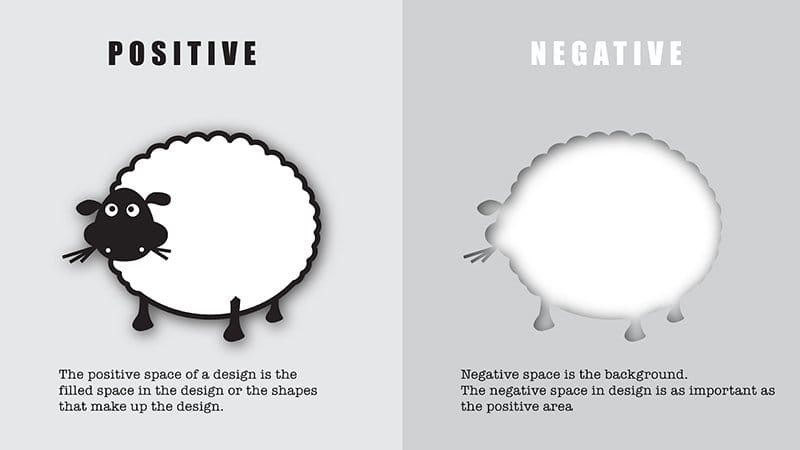
Conversely, the actual professional content and visual elements that make up the design are called positive space. Space also refers to the locations of the text, pictures, or other graphic components.
You must distribute and arrange positive space properly for a harmonic and aesthetically pleasing design. Achieving balance, rhythm, and visual flow requires careful consideration of the positioning, alignment, and distance between essential design elements.
Space is an important design element used in creating 2D designs and ensuring the understanding of the design. In web design, you can use white space for advertising to avoid complex visuals for a more beautiful design.
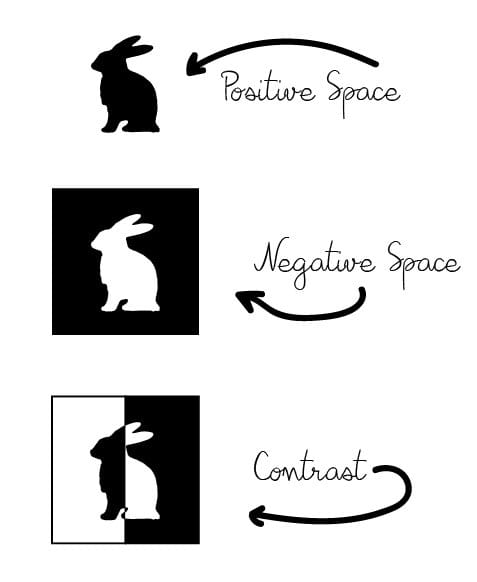
Explore Further
- Types of Graphic Design
- Graphic Design Website Templates
- Design Brief Templates
- Best Flyer Makers
- Best Free Online Meme Generator Tools
- How to Design a Logo
- Best Free Logo Maker Tools
- eCommerce Website Design
- Best Graphic Design Portfolio Examples
- Best Website Designs